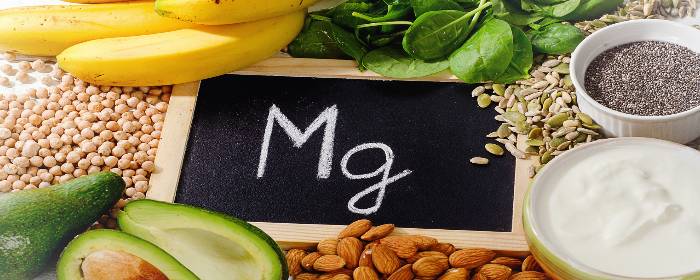
by admin | Aug 16, 2019 | Health Awareness
Crohn’s disease is a rare but serious inflammatory bowel disease. The condition causes the digestive tract lining to become inflamed, leading to symptoms such as diarrhea, abdominal pain, fatigue, weight loss, and malnutrition. Individuals with Crohn’s disease are also more likely to experience small intestine permeability, or what’s known as “leaky gut.” While there is no cure for the disease, medications and lifestyle modifications can be used to help manage the condition. In particular, research suggests zinc supplements may help to combat leaky gut associated with Crohn’s disease.
What is Leaky Gut?
In leaky gut syndrome, the gaps in intestinal walls loosen, allowing bacteria and toxins to pass through the intestines and into the bloodstream. Experts believe the condition may be linked to chronic and autoimmune conditions, including celiac disease and type 1 diabetes.
Leaky gut can occur whenever the balance between good and bad gut bacteria is off. The intestinal tract is home to hundreds of good bacteria, which help to manage digestion, process nutrients, and fight off bad bacteria.
Can Zinc Help?
While optimizing diet to maintain digestive health is a good start for many individuals, there are many other factors beyond nutrition at play when it comes to leaky gut. This is especially true for people with Crohn’s disease. Everything from compounds in tap water to medications can alter gut flora, which is why many individuals, and especially those with inflammatory bowel diseases, need an extra line of defense against leaky gut.
Because Crohn’s disease can inhibit proper nutrient absorption, people with the condition may face deficiencies in key vitamins and minerals. In particular, studies suggest that a zinc deficiency contributes to damage in the gut membrane barrier, but with zinc supplements, small intestine permeability can be improved. In a study published in Inflammatory Bowel Diseases, the majority of patients who were given 110 mg of oral zinc sulfate supplements for 8 weeks had normal intestinal permeability and did not relapse. The findings suggest that zinc supplements can resolve permeability issues in individuals with Crohn’s disease and that strengthening the intestinal barrier may minimize the risk of relapse.
While each patient should check with their doctor before introducing any new supplements to their daily regimen, the findings do seem to be promising and may suggest that a single vitamin could play a powerful role in Crohn’s disease management.

by admin | Aug 8, 2019 | Health Awareness
For quite some time now, scientists and medical experts have known that gut bacteria and the immune system appear to be closely intertwined. Until very recently, however, the precise mechanisms behind this connection have been unclear. In late May, researchers revealed groundbreaking findings observed in animal studies which suggest how the intestines may help regulate our overall health.
The Role of the Lower GI Tract
In mammals, the intestinal system allows healthy nutrients to pass through its walls, while at the same time blocking harmful bacteria from spreading throughout the body. In particular, the lower gastrointestinal (GI) tract is where most of these activities take place: food is processed until it becomes fundamental nutrients, which then pass through the intestinal wall to the bloodstream and to our vital organs. But the question of how the intestinal wall prevents the harmful bacteria from escaping with these nutrients has puzzled researchers.
Now, researchers from Rockefeller University in New York City think they may have an answer. Their study findings show that in mice, a sophisticated intestinal system has been observed. Specifically, certain areas of the GI tract are more likely to elicit an immune system response than others when encountering pathogens. While the intestines look similar, closer inspection reveals a complex intestinal immune system with a unique, organized structure.
Key Differences Throughout the GI System
Interestingly, researchers found that lymph nodes in mice’s large intestines would detect and combat harmful bacteria such as salmonella, whereas small intestines seemed to primarily carry out nutrient absorption and delivery to the bloodstream. According to the researchers, the ability to pinpoint the areas in the intestines which produce the most powerful immune system response could help medical experts create more targeted therapies for GI conditions. They also suspect that the findings could make oral vaccines, which have previously failed to produce an ample immune response, a possibility in the future.
While there is clearly still much to glean from microbiome research, we do know that maintaining healthy gut bacteria can have numerous benefits for our bodies. From eating a diet rich in plant-based food sources to taking supplements as recommended or approved by your doctor, there are many ways you can work towards maintaining a healthy balance of gut flora.

by admin | Jul 31, 2019 | Health Awareness
B vitamins have a powerful impact on the body, contributing to a broad range of processes that help us function every day. The eight B vitamins aid in converting food into fuel to support the metabolism. They’re also vital to blood cell development, brain and liver function, eyesight, and maintaining vibrant skin and nails. Yet, of the eight B vitamins, there’s one standout contender which has an especially important job: vitamin B6.
The Power of Vitamin B6
Also known as pyridoxine, vitamin B6 is essential for nervous system health and brain development. It is used in the production of hemoglobin, the critical protein which helps transport oxygen throughout the body via blood. It also supports a healthy immune system.
While B6 is critical for brain development in children, it’s also needed to support brain health at every age. The vitamin supports the production of key hormones, including serotonin. This neurotransmitter contributes to feelings of happiness and wellbeing, but its complex biological function extends far beyond mood regulation. In fact, serotonin also modulates cognition, memory, and various physiological processes.
Vitamin B6 also helps the body produce melatonin, the hormone that corresponds with daylight and helps us maintain healthy sleep patterns. Melatonin production declines naturally with age, and emerging research is exploring the connection between the hormone and reduced cognitive function in people with dementia.
To that end, researchers are also studying the impact of B vitamins on aging brains. Some studies suggest a combination of B6, B12, and folate could minimize age-related memory loss and cognitive decline, while also reducing the risk of Alzheimer’s.
How Much B6 Do You Need?
Recommended daily values for B6 change with age and you should always consult with your physician before adding any supplements to your daily regimen. While children need relatively little (just 0.5 mg for children aged 1 to 3, for example), men and women aged 19 to 50 should aim for 1.3 mg per day. For men aged 51 and over, 1.7 mg is recommended, while women of the same ages should stick to 1.5 mg. With that said, vitamin B6 is water soluble, meaning that any excess amount you take in that the body cannot use will exit as waste. Thus, unlike fat-soluble vitamins which are absorbed by the body when taken in excess, B6 and other water-soluble vitamins pose very little threat of toxicity.
What Are Some Good Sources of B6?
Some people with chronic diseases, including Crohn’s disease, celiac disease, and ulcerative colitis could be at risk of vitamin deficiencies and should speak with their healthcare providers about alternate means of ensuring ample nutrition. Most other people who eat a healthy, varied diet with plenty of whole foods are likely to take in adequate amounts of B6.
Yet, it’s not always easy to maintain optimal eating habits with every meal, which is why it may be a good idea to pay close attention to your B6 intake. Meat, poultry, and fish are rich in B6, so people following plant-based diets could be more likely to get lower amounts of B6. Chickpeas, nuts, beans, bananas, and potatoes also contain the vitamin, however.
If you’re concerned about your vitamin B6 intake, you might consider discussing supplements with your doctor. B6 is available in both multivitamins and as a standalone supplement. Taking a daily vitamin can help fill in any nutritional gaps in your diet, and as further research is conducted, it may also be confirmed that increasing the intake of this powerful vitamin could benefit populations with cognitive or health concerns.

by admin | Jul 23, 2019 | Health Awareness
Bone broth appears to be popping up everywhere these days. Hailed for its powerful nutritious properties among communities of health-conscious individuals, the stock can be made right at home and may provide a wealth of health benefits. Although research behind its benefits is still ongoing, millennia of broth drinkers can’t be wrong. Discover what the broth is made of and how it could benefit you below.
What is Bone Broth?
The history of bone broth extends all the way back to prehistoric times when hunter-gatherers would use animal parts they couldn’t otherwise consume into a drinkable broth. The diverse solution can be made from virtually any animal, and you don’t even need a recipe: just mix together water, vinegar, and bones in a large pot. If you do prefer to follow a formula for your first try, there are many recipes available online.
What Are the Benefits of Bone Broth?
The health drink is rich in the protein collagen, which, when cooked, becomes gelatin. The gelatin provides critical amino acids, but in addition, the animal bones themselves are loaded with key nutrients such as calcium, potassium, magnesium, and phosphorus. Marrow is also replete with vitamins A, and K2, along with zinc, iron, and omega-3 fatty acids. Many individuals – even those who eat well – have gaps in their diets, so adding bone broth can help address them.
Beyond bone broth’s rich vitamin and mineral concentration, it is also believed to have a number of key benefits. Some evidence shows that bone broth:
- Boosts digestive health. The solution is highly digestible and also promotes the digestion of other foods, as gelatin binds to water in the digestive tract to move food through. Moreover, it’s suspected that the gelatin can help intestinal wall permeability, known as leaky gut syndrome.
- Helps you achieve cosmetic goals. By improving connective tissues, it’s suspected that the broth could reduce the appearance of cellulite, improve hair and nail strength, and re-mineralize teeth.
- Improves joint health. Animal bones are products which, under normal circumstances, are inedible. Yet, they’re rich in collagen, which can be formed into gelatin that the body can use to strengthen its own connective tissues. Thus, drinking bone broth may improve joint health, especially in individuals with conditions like osteoarthritis.
- Reduces inflammation. Amino acids glycine and arginine found naturally in bone broth, are known for fighting inflammation. Chronic inflammation is suspected to play a key role in many serious conditions, including Alzheimer’s disease, heart disease, diabetes, and certain types of cancer, among other illnesses.
- Kickstarts weight loss. Although bone broth is typically low-calorie, it’s also very satiating. Thanks to the gelatin, you’ll likely feel full long after drinking the broth, even though you’ve only consumed a few calories. It’s also been shown to reduce fat and increase muscle strength.
- Improves sleep quality. Finally, the glycine present in bone broth may also aid in sleep regulation. Thus, anyone who has difficulty falling or staying asleep may wish to incorporate broth into their nightly routine, as it won’t leave you feeling groggy or have any of the other side effects associated with sleeping pills.
What is the Bone Broth Diet?
You may have heard about bone broth diets designed to help you lose weight and boost overall health. While you certainly don’t have to be quite this prescriptive to incorporate bone broth into your diet, some individuals enjoy having a plan laid out for them. The diet incorporates periods of intermittent fasting to boost metabolism, it’s a good idea to speak with your doctor before engaging in any fasts. People with blood sugar concerns or any similar health issues may need to avoid fasts. With that said, the benefits of bone broth described above can still be realized by simply drinking the mixture regularly alongside a healthy diet.

by admin | Jul 18, 2019 | Health Awareness
Lactose intolerance and milk allergy are two conditions in which patients experience adverse health effects upon consuming milk products. It’s, therefore, no surprise that they are often confused and mistakenly used interchangeably. Yet, the two have distinct characteristics, and understanding their unique impacts and how to maintain a healthy diet in spite of them is important for patients.
Key Differences
Lactose intolerance is the body’s inability to fully digest the sugar, or lactose, found in milk. It typically results from a deficiency of lactase, an enzyme in the small intestine that helps turn milk into glucose and galactose. Without lactase, the lactose moves into the colon, where normal bacteria interact with undigested lactose, producing a range of uncomfortable symptoms.
Milk allergy, on the other hand, is the same as any other food allergy. The protein in milk produces an allergic reaction, so people with the allergy are at risk of serious reactions upon consuming both milk itself and products containing it. While an allergy to cow’s milk is seen most commonly, reactions can also occur with milk from goats, sheep, buffalo, and other mammals.
Symptoms
Lactose intolerance can develop at any time in a person’s life and is more common than milk allergy. It tends to be more common in certain populations with up to 90% of African Americans experiencing its symptoms. The condition is also common in Asians and Native Americans and is often seen in elderly populations. Roughly 30-50 million Americans are believed to have lactose intolerance.
Within 30 minutes to two hours after having milk or dairy products, most people with lactose intolerance experience one or more of the following symptoms:
- Stomach pain
- Nausea
- Diarrhea
- Gas and bloating
Milk allergies, on the other hand, are commonly seen in children under the age of three, although they can develop at any age. Oftentimes, children outgrow the condition by age five. Symptoms vary from one person to the next and can occur within minutes or hours after drinking milk or eating milk products. Immediate symptoms include:
- Vomiting
- Coughing and shortness of breath
- Swelling of the tongue, lips, or throat
- Itching or tingling around the mouth
- Wheezing
- Hives
Later, symptoms such as a runny nose, watery eyes, abdominal cramps, and loose stool or diarrhea may occur. Milk is also the third-most common food to cause anaphylaxis, a life-threatening condition in which the airway becomes blocked. For this reason, avoiding milk products and carrying an epinephrine shot is critical for patients with the allergy.
Diagnosis
Diagnostics are available for both lactose intolerance and milk allergies. Doctors often encourage patients to keep food diaries when symptoms such as those listed above arise. To help differentiate among the two conditions, food allergy testing and hydrogen breath tests can be used to diagnose milk allergy and lactose intolerance, respectively.
Patients with lactose intolerance may be able to tolerate small amounts of dairy, especially those which are lower in lactose, such as yogurt or hard cheese. People with milk allergies, on the other hand, must avoid dairy, which also encompasses the ingredients ghee, lactulose, lactalbumin, whey, and casein.
Luckily, there are many alternatives to dairy available today. Nut and soy milk are useful substitutions people with both milk allergies and lactose intolerance can enjoy. With that said, it’s important for patients to ensure they’re getting enough calcium. While doctors may recommend supplements on an as-needed basis, foods rich in calcium such as dark leafy greens and almonds can also be incorporated into the diet to maintain optimal nutrition.

by admin | Jul 10, 2019 | Health Awareness
When it comes to the minerals your body needs to perform well, calcium and potassium tend to get most of the attention. Yet, magnesium, a mineral responsible for more than 300 reactions throughout your body, is a key player in optimal nutrition and overall health. It helps to metabolize food, maintain strong bones, and control inflammation, but its most important job of all is regulating heart rhythm.
Magnesium & Heartbeat
Magnesium contributes to the transportation of electrolytes into a cell. Electrolytes, including potassium and calcium, are critical for the nerve signals and muscle contractions needed to maintain a stable heartbeat. According to the 2012 Framingham Heart Study, low magnesium correlates with atrial fibrillation, a heart malfunction in which the organ’s electrical system creates quivers in the upper chambers, ultimately creating an irregular heartbeat.
While further studies must be completed to determine whether increased magnesium intake can boost heart health, there do appear to be clear benefits of getting enough magnesium. One meta-analysis of more than 20 studies indicate magnesium supplements can lower blood pressure. This could ultimately contribute to improved heart health, since high blood pressure can lead to the thickening of the arteries, increasing the risk for heart attack, stroke, and heart failure. Separately, a link between elevated heart attack risk and low magnesium levels has also been established.
How Much Magnesium Does Your Body Need?
Healthy individuals have roughly 25 grams of magnesium stored in their bodies, which is concentrated mostly in the bones. Less than 1% is found in the blood, which is why diagnosing a magnesium deficiency presents challenges. With that said, certain populations are known to face a greater risk for a deficiency, including people with conditions that deplete the mineral. Individuals with gastrointestinal diseases, type 2 diabetes, and alcoholism may have low magnesium. Additionally, people taking diuretics and proton pump inhibitors share a greater risk for a magnesium deficiency.
Individuals with a diagnosed magnesium deficiency may be recommended for supplements, as increasing intake of the mineral could help avoid serious health issues, including irregular heartbeat, seizures, and muscle spasms. The recommended dietary allowance (RDA), or daily level of intake sufficient for nearly all healthy individuals, is 420 mg for male adults aged 31 and up, and 320 mg for women of the same age. Younger people may need less, while women who are pregnant may need more. Speak to your physician to determine what may be best for you.
Dietary Sources of Magnesium
While some foods, such as cereals, are enriched with added magnesium, there are also many food sources which are naturally high in the mineral. Almonds boast the greatest amount of magnesium, with 80 mg per serving. Spinach, cashews, soymilk, black beans, avocado, potatoes, and yogurt are also good sources of the nutrient.
Of course, if you’re experiencing symptoms such as irregular heartbeat or muscle spasms, it’s important to get to the bottom of it by consulting your physician before beginning any supplement regimen. For the right individuals, the benefits of magnesium can extend beyond heart health, leading to reduced inflammation and insulin resistance as well as improved exercise performance.







 St. Petersburg, Florida
St. Petersburg, Florida
